Photos by Craig Hunter and Trevor Hunter
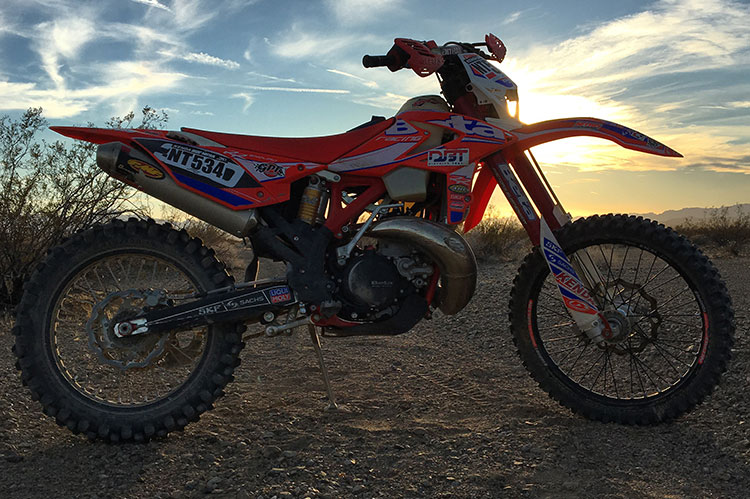
At Dirt Bike Test we don’t sugar coat things and we don’t guess. This 2017 Beta 300RR Long Term Test is an example. We have had reserves about giving recommendations on Betas based on the durability side of things. Not because we had doubts, but because we had not personally had experiences beyond a few months with a brand new test bike. In all of our years of testing the Italian bikes we have never had a mechanical issue aside from small and minor things like oil leaks and some suspension parts that had contamination inside them. All these issues were detailed in the tests. But to prove it to us Beta let us keep a bike for the better part of a year where we rode and raced it like we owned it, maybe treated it like a rental if we are being honest. And we also tore a much older customer bike apart just to double check. The kind of testing that is rare in your current media outlets.
Our trusty Beta 300 RR Race Edition now has over 60 hard hours of racing and riding on a variety of terrain. After our riding impression earlier this year, we continued to ride the 300 all over California and Nevada and we even put it up against KTM’s 300 XC-W. How’d it fare? Click here to read more. After our mini 300 shootout, we used prepped the bike for the upcoming 24 Hours of Glen Helen. Only basic prep was performed with an oil change using Maxima MTL 80wt, standard additions like a dry-break ready IMS tank, a GPR Stabilizer, ARC levers, and some suspension modifications performed by Beta Factory Services. The original top end and clutch were even used to start the day long race!

The DBT Jr. team employed the bike to a solid 2nd overall with some heavy competition in the Pro class with Ox Motorsports’ two teams and the Precision Concepts team. The bike had very minor mechanical issues and none of which were the bike’s fault which you can read about HERE. Following the 24 Hour, we performed another oil change with some Maxima MTL 80wt, bled the brakes with Maxima’s 600 Series brake fluid, installed another set of OEM rear brake pads, put the FMF Q Stealth spark arrestor on to be legal, and threw on a fresh Maxxis Maxxcross SI rear tire.
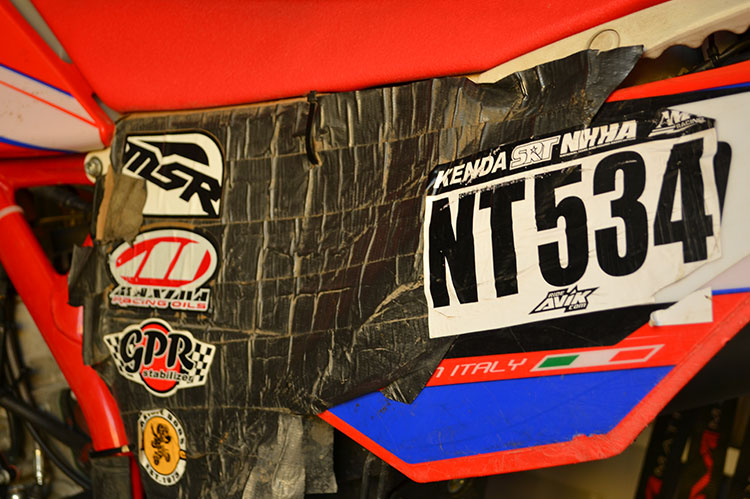
Then we lined the bike up on the start line for the 100’s MC National Hare and Hound at Cougar Buttes. We also lost the airbox cover in the middle of the night at the 24 Hour so I rigged up a cardboard cover that was attached to the subframe via zip-ties and some duct tape. Three hours and 40 minutes after the banner dropped, the bike came into the finish 11th overall and 1st Open Expert, still running strong airbox cover and all.
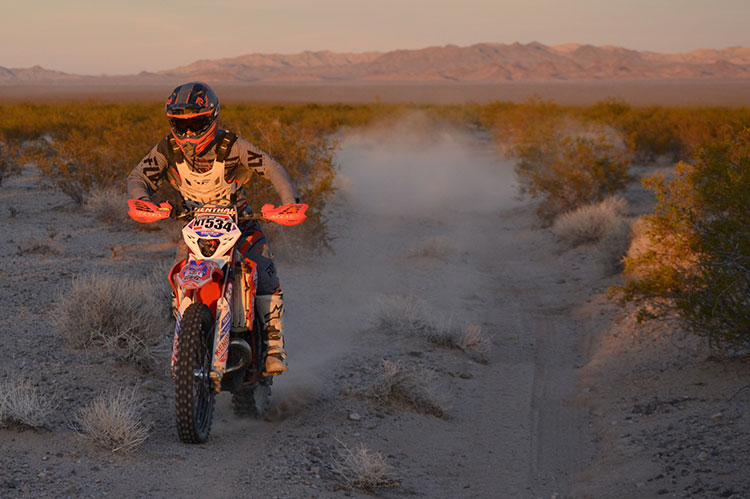
With over 100 miles of racing through the desert, I was able to solidify my feel for the bike’s strengths and weaknesses. The 300cc motor was a dream out in the desert. While the meat of the power lies in the bottom to mid range, it still had plenty of power up on top and easily out motored a couple of 250cc two strokes across some of the faster valleys. Once into the tight and technical terrain that’s more common on the 2nd and 3rd loops of a National Hare and Hound, the ability to lug the bike up and across the rocky hillsides in practically any gear desired was favorable and made the technical sections that much easier.

After spending time on this bike in these conditions, riding a 300cc two-stroke in extreme enduro races and terrain is almost like cheating when compared to the typical bike. The only complaint with the Beta in the desert was the suspension and that was expected after the 24-Hour. With 25 hard hours on it already and a softer setup to begin with, riding across the valleys and through the whoops at speed wasn’t very confidence inspiring as it would blow through the stroke on both ends rather quickly. However, in the tighter 2nd and 3rd gear portions of the race, the bike worked great soaking up every little rock with no deflection. This quickly changed the race plans to managing a good speed in the faster sections and racing through the tight stuff.

By the end of the race, we finally felt the clutch starting to act a little funny. The engagement was changing. This, on a Beta with such good clutch feel stands out like a sore thumb. Upon inspection there was nothing funny and now I know I need to bleed the fluid. Kinda like I did with the brakes but since I come from cable clutch world I did not think of this. Likewise, some exhaust o-rings are needed as the pipe is vibrating quite a bit more than usual and some oil is seeping out of the exhaust port onto the cylinder. Additionally, the suspension was on its last leg and needs to be serviced after almost 30 hours of hard racing. Sooner would have been better!
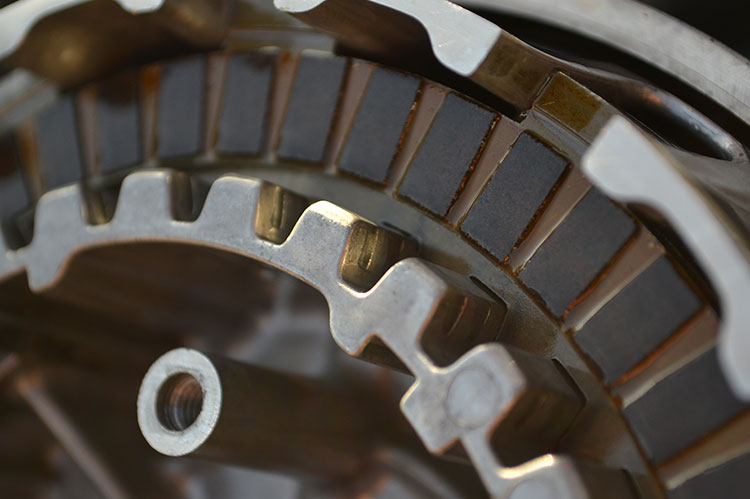
Overall, we are very impressed with the durability of Beta’s 300RR race weapon. The amount of maintenance required is very little and everything is holding up strong. The motor runs almost as good as new but it is time to rebuild the top end with this much race time on the bike. Our biggest complaint with this bike is the air filter. It’s fairly difficult to properly line up the filter in the air box when rushed compared to some of the other systems out there. After quite a few changes, we got the hang of it but we still found ourselves having to double check the fit.
DBT even just rebuilt a 300+ hour 2013 Beta 300 that has seen all types of use and even a run at the King Of The Motos. The bike did not need anything aside from bearings on the chassis and some crash related broken parts including the plastic subframe. Inside the motor everything looked great–including the clutch, electric starter piston, crank, and all the transmission and shifting parts. But for safety we rebuilt the crank, replaced the piston and rings as well as put in fresh clutch plates. We’ll have a whole story on this bike coming soon. Plain and simple Betas are built tough and we have learned this by riding the wheels off of them and working on them as well.
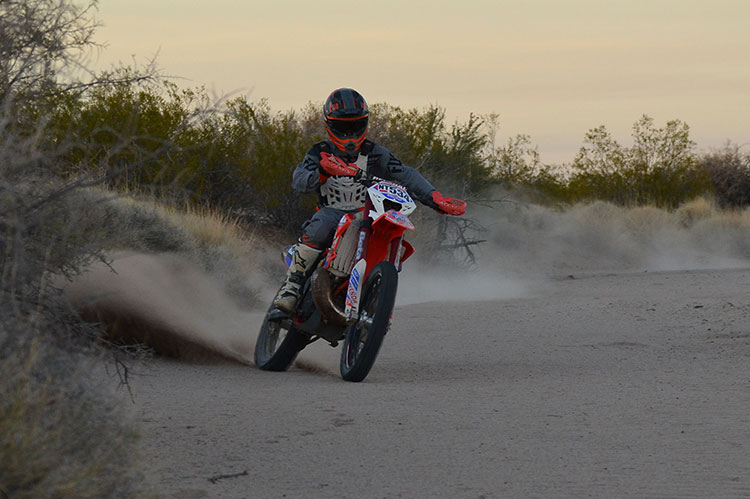
My typical race bike is a YZ250 two-stroke, a somewhat similar bike, and when compared to each other, they both have pros and cons. For the standard Big6 Grand Prix or WORCS race that I compete in or for a day at the motocross track, a YZ250 is more preferable than the Beta 300 due to the fact that the faster revving motor characteristic is a little more suited towards the grand prix style racing. For any sort of trail riding or even some desert racing, the Beta 300 RR feels better suited. First, it comes as an off-road bike equipped with the kickstand and 6-speed transmission, but also the motor is more enjoyable for this type of terrain. And there is the electric starting! The 300 acts as more of a trail bike in some cases and is very easy to ride which suits it to trail riding. Also, with the 6-speed transmission, it has a much broader range of riding than the Yamaha. One area where the I feel the Yamaha has the Beta covered is in the suspension department– of course my YZ is set up for me and we have only tested one setting on the Beta. However, I recently raced my YZ250 at the Ontario and Las Vegas Endurocross races and the entire time I was on the track I wished I was riding the Beta with its tractable motor and ultra plush suspension – not GP stiff suspension.
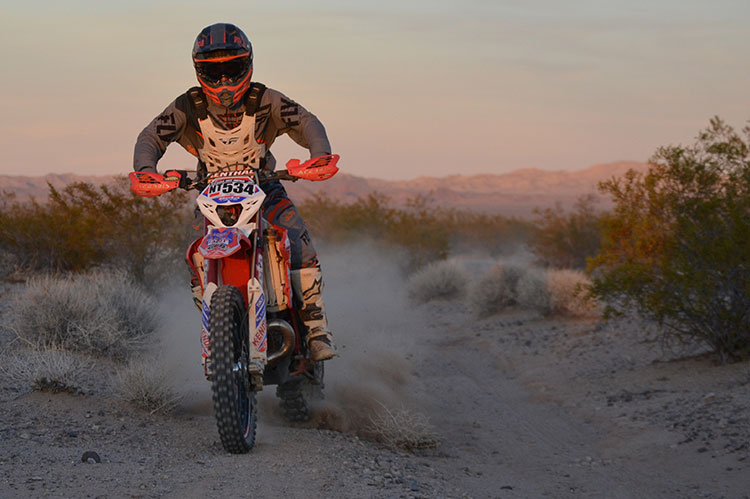
Beta’s 300 RR Race Edition has proven to be quite the versatile bike–from trial rider to race weapon. It’s a contender against some of the other proven 300’s like the KTM 300 XC-W and 300 XC. Beta has made huge strides in the past few years and we look forward to continuing testing their progression in the years to come.


2 Responses to “2017 Beta 300 RR Race Edition Long Term Update”
Jeff Blanton
Excellent write-up, thanks for sharing. I’m on my second 300RR Race Edition and can attest to the bike’s rugged and powerful nature. I live in Colorado and wouldn’t want another bike for the mountainous terrain I so dearly love. Solid, tractor-like power with a plush ride and the ability to connect trails makes the bike perfect for day-tripping and even multi-day excursions. I usually ride solo so having a reliable, capable machine is extremely important to me and the Beta has proven itself time and time again when the going gets rough. A solid enduro machine all around! https://uploads.disquscdn.com/images/078071b72d201691029631ea9fa39817beed2dab40b3e26fd3af84736ca1cc3a.jpg
Jimmy Lewis
We did not see this. But we serviced the suspension a few times too.